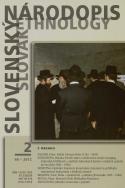POMĚR STÁTU A VEŘEJNOSTI K OSUDU SYNAGOG, ŽIDOVSKÝCH HŘBITOVŮA ŽIDOVSKÝCH BUDOV V ČESKÝCH ZEMÍCH PO ŠOA (LÉTA 1945 – 1956)
THE STATE AND PUBLIC AND THE DESTINY OF SYNAGOGUES, JEWISH CEMETERIES AND JEWISH BUILDINGS IN THE CZECH LANDS (SOA YEARS 1945-1956)
Author(s): Blanka SoukupováSubject(s): Anthropology
Published by: SAV - Slovenská akadémia vied - Ústav etnológie a sociálnej antropológie Slovenskej akadémie vied
Keywords: Jewish monuments; buildings; restitution; devastation; recodification
Summary/Abstract: This study maps the state of Jewish monuments and buildings after the Shoah. A number of synagogues and cemeteries in the border region had already been destroyed during the so-called Crystal Night and in the years of existence of the Reich’s Sudetenregion. Jewish monuments and buildings were also evastated on the territory of the Protectorate, where Jewish property was confiscated. After the liberation, it was impossible to solve the problem of the dismal state of the monuments and buildings. The catastrophic situation was made worse by the policy of so-called public interest, which the state organs had already begun to apply during the so-called natural restitutions from 1946 to 1948. After the February Revolution came a phase of open expropriation of church property and property of religious communities. The undignified exploitation of synagogues, devastation and also abolition of Jewish cemeteries, and seizure of Jewish real estate, continued. By symbolic recodification of meaning and through the physical disappearance of a number of Jewish monuments and buildings from the public space, the last evidences of the multiculturality of the prewar Czech space were disappearing. This paper analyzes the mechanisms of power, its modes of argumentation, and minority attempts at defense.
Journal: Slovenský národopis
- Issue Year: 60/2012
- Issue No: 2
- Page Range: 133-150
- Page Count: 18
- Language: Czech

